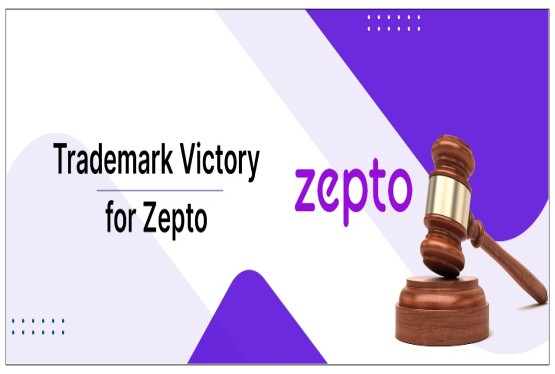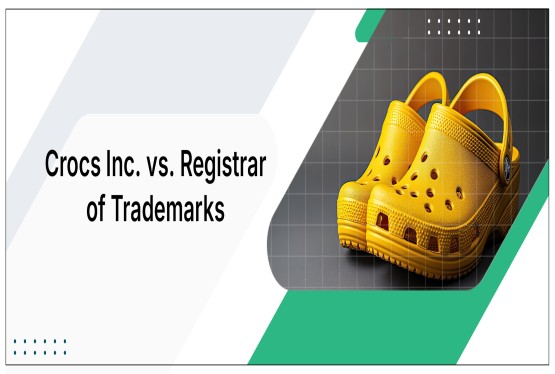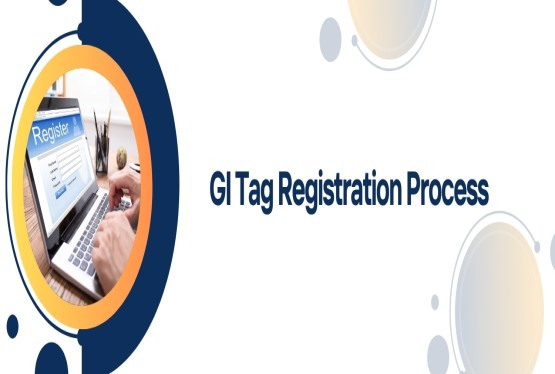During the initial step of forming your business and setting up your brand, every individual faces this question… What should be the face of the brand? Now, we are not talking about the human face but the logo and mark that represent your products and brand. To protect your brand from any trademark infringement is it always advisable to get your logo registered with the trademark registry to have the exclusive rights and to secure your brand identity.
The logo of a brand signifies the actual motive, aim, culture and the “vibe” of your brand. So it is very important for any new business to consider a good logo for their brand. Your logo can be filled with vibrant colours, like Lays or it can be in black and white like Apple. Now, it is upto you to decide the colour and logo to represent your brand.
Choosing to file in colour can be advantageous if the colours used in the logo are distinctive and play a significant role in distinguishing the brand. However, it's essential to note that this may limit the protection to the exact colour combination depicted in the application.
On the other hand, opting for black and white (grey) allows for broader protection, as it covers the design or shape of the logo irrespective of the colours used. This can be beneficial if the brand intends to use the logo in various colour schemes or if the colours are not considered crucial to the brand's identity.
Ultimately, the decision to file a trademark logo in colour or black and white depends on various factors, including the brand's identity, the importance of colours in distinguishing the brand, and the flexibility needed for future use. Understanding these considerations is crucial for making an informed choice that aligns with the brand's goals and objectives.
Trademark Logo Filing in India
Now, once you have selected your logo, it is a crucial step to trademark that logo to protect it from any kind of infringement. In simple terms, it means to stop anyone from using your logo in the market.
Trademark registration in India is governed by the Trade Marks Act, 1999 and the Trade Marks Rules, 2017. Here's a simplified guide to understanding the trademark logo filing process in India:
-
Trademark Search: Before filing a trademark application, it's advisable to conduct a comprehensive search of your trademark to ensure that your mark is the unique one in the market and no other brand or business is using that same mark.
-
Filing the Application: After you conduct the trademark search, you can proceed further to file your trademark application through form TM-A. This can be done online through the official website of the Controller General of Patents, Designs, and Trademarks (CGPDTM) or physically by submitting the application at one of the trademark offices. It is always advisable to seek help from trademark attorneys who are specialized in trademark related matters. They make your work simple and convenient.
-
Documents Required: The following documents are initially required for filing a trademark application.
-
Logo representation in the prescribed format (in JPEG format for online filing).
-
Details of the applicant, including name, address, and nationality.
-
Power of Attorney (if filed through an agent).
-
Goods or services for which the trademark is sought (as per the Nice Classification).
-
NOTE: The trademark registry may ask for more documents during your trademark application process. To know more about the trademark application status, you can contact Compliance Calendar for your needs.
-
Examination by the Trademark Office: There are various steps during the process of registration of trademark. After filing of your application and status, send to vienna codification, the trademark examiner examines your application under section 9 and 11 of the Trademarks act, 1999.
-
Publication in the Trademark Journal: If the examiner finds no trademark objections, the trademark application is published in the Trademark Journal. This allows third parties to oppose the registration within a specified period (usually 4 months from the date of publication).
-
Opposition Proceedings: If there are no oppositions or if oppositions are not valid, the trademark proceeds towards registration. If oppositions are filed for your trademark, you can attend a show cause hearing with the help of experienced trademark attorneys , appealing your side. If the registrar is satisfied with your appeal, the trademark is registered under the Trademark registry of India,
-
Registration: If there are no valid objections or oppositions, the trademark is registered, and a registration certificate is issued. The registration is valid for ten years from the date of filing. You can always renew your trademark with the help of trademark agents or experts.
-
Trademark Renewal: To maintain the trademark registration, it's essential to renew it periodically. Renewal can be done every ten years by filing the trademark renewal form (TM-R) along with the fee of Rs. 9000/- without any surcharges.
To know more about the trademark renewal process or trademark restoration process, read here.
The Impact of colour in Trademark Logo Registration
The impact of colour in trademark logo registration can be significant, as colour plays a crucial role in brand recognition, consumer perception, and having a unique face in the market. Here are several ways in which colour influences trademark logo registration:
-
Brand Recognition: Colour is a powerful tool for brand recognition and association. Many well-established brands are instantly identifiable by their distinctive colour schemes. Registering a trademark logo in colour can help reinforce brand recognition and distinguish your products or services from competitors.
-
Consumer Perception: Colours show emotions and convey messages, influencing consumer perception of a brand. For example, warm colours like red and orange may convey energy and excitement, while cool colours like blue and green may portray feelings of trust and reliability.
-
Distinctiveness and Differentiation: Trademark registration provides legal protection against unauthorised use of your logo by competitors. Using distinctive colours in your trademark logo can enhance its distinctiveness and make it more memorable to consumers. This differentiation can give your brand a competitive edge in the marketplace and prevent confusion with similar logos used by other companies. No one will confuse your logo from any other logo if it will be unique and different.
-
Enforcement of Rights: Registering a trademark logo in colour strengthens your legal rights to enforce against infringement or any other misuse of your brand logo. It enables you to take legal action against third parties who attempt to use similar logos in conflicting colours or colour combinations, thereby protecting your brand's reputation and integrity.
-
Global Considerations: In some jurisdictions, trademark registration in colour may provide lesser protection compared to registration in black and white. It is essential to consider the specific requirements and practices of each jurisdiction when filing for trademark registration to ensure complete protection of your brand worldwide.
How Trademark Protects your Brand Logo and Image?
Under Indian trademark law, distinctiveness is a key criterion for trademark registration, and colour can play a crucial role in achieving this distinction. To successfully register a colour mark, businesses must showcase its distinctiveness and ability to differentiate their goods or services from others in the market. The legal provisions governing the registration and protection of colour marks in trademark logos are mentioned in Trade Marks Act, 1999. Below are some of the key legal provisions relevant to colour marks:
-
Distinctiveness (Section 9): Section 9 of the Trade Marks Act, 1999 states that trademarks must be distinctive to be registered. This provision applies to colour marks as well. This requires them to be capable of distinguishing the goods or services of one entity from those of others.
-
Non-Conventional Trademarks (Section 2(1)(m)): The definition of trademarks under Section 2(1)(m) of the Trade Marks Act, 1999 includes non-conventional trademarks such as colours, sounds, shapes, and smells. This provision acknowledges the registrability of colour marks alongside traditional word and logo marks.
-
Scope of Protection (Section 28): Section 28 of the Trade Marks Act, 1999 outlines the rights acquired by trademark registration, including the exclusive right to use the mark in relation to the goods or services for which it is registered. This provision extends to colour marks, granting protection against use of mark by any third party.
-
Enforcement (Section 29): Section 29 of the Trade Marks Act, 1999 addresses infringement of registered trademarks. It prohibits the use of identical or deceptively similar marks in relation to identical or similar goods or services without the trademark owner's consent.
-
Cancellation and Opposition (Sections 47 and 57): Sections 47 and 57 of the Trade Marks Act, 1999 provide for cancellation and opposition proceedings, respectively. These provisions allow interested parties to challenge the validity of trademark registrations, including colour marks, on grounds such as lack of distinctiveness or prior rights. If you see any logo or mark, similar to your mark getting registered, you can file opposition through TM-O form.
-
Trade Marks Rules, 2017: The Trade Marks Rules, 2017 provide procedural guidelines for trademark registration and related matters. Rule 25 deals specifically with the registration of non-conventional trademarks, including colour marks, outlining the requirements and procedures for filing such applications.
These legal provisions form the framework for the registration, protection, and enforcement of colour marks in trademark logos in India.
Some Brand With Unique and Distinctive Logos
When it comes to google itself, they have a logo with a combination of colours. The colour of Blue, red, yellow and green makes the logo visually pleasing and different. The use of primary colours and a secondary colour for the letter “L” makes the logo distinct and unique.

NIKE
One of the most popular and renowned shoe and sport clothing brand Nike has the most minimalistic and black & white logo. The black “swoosh” logo of Nike makes it aesthetically appealing and highlights the image of the brand. The brand believes in serving the good quality and simple designs, however the tick also signifies the wings of the Greek Goddess Nike.

McDonald’s
One of the most famous and iconic logos is of McDonalds. The logo uses a combination of the colour red and yellow “M”. The logo is simple, colourful and yet establishes the brand reputation. The colour red represents strength and energy, whereas yellow represents happiness.

Disney
Disney is the leading media and entertainment company in the world. However, its logo is still black and white in colour with stylized font, which is considered to be one of the signatures of the founder Walt Disney. Disney has always kept its logo simple yet stylized, representing the vibe of the company.

How can Compliance Calendar Help?
Black & White or colourful, Compliance Calendar will help you register all your logos, and mark.Compliance Calendar serves as a one stop solution for all trademark needs. Are you also looking to get your trademark registered or stuck in any trademark procedure? We are here to help you anytime! We will not only help you register your trademark but also protect your mark at all the stages of registration. For any further clarifications and suggestions, kindly connect on 9988424211 or mail at info@ccoffice.in.






























_(b)_of_the_Trademark_Act,_1999_(1)_crop10_thumb.jpg)



_crop10_thumb.jpg)




























_crop10_thumb.jpg)
_crop10_thumb.jpg)






_crop10_thumb.jpg)








_crop10_thumb.jpg)


_crop10_thumb.jpg)





























_crop10_thumb.jpg)

















_crop10_thumb.jpg)






_crop10_thumb.jpg)












































































































































_crop10_thumb.jpg)




































_crop10_thumb.jpg)












_crop10_thumb.jpg)















































_crop10_thumb.jpg)
























































































